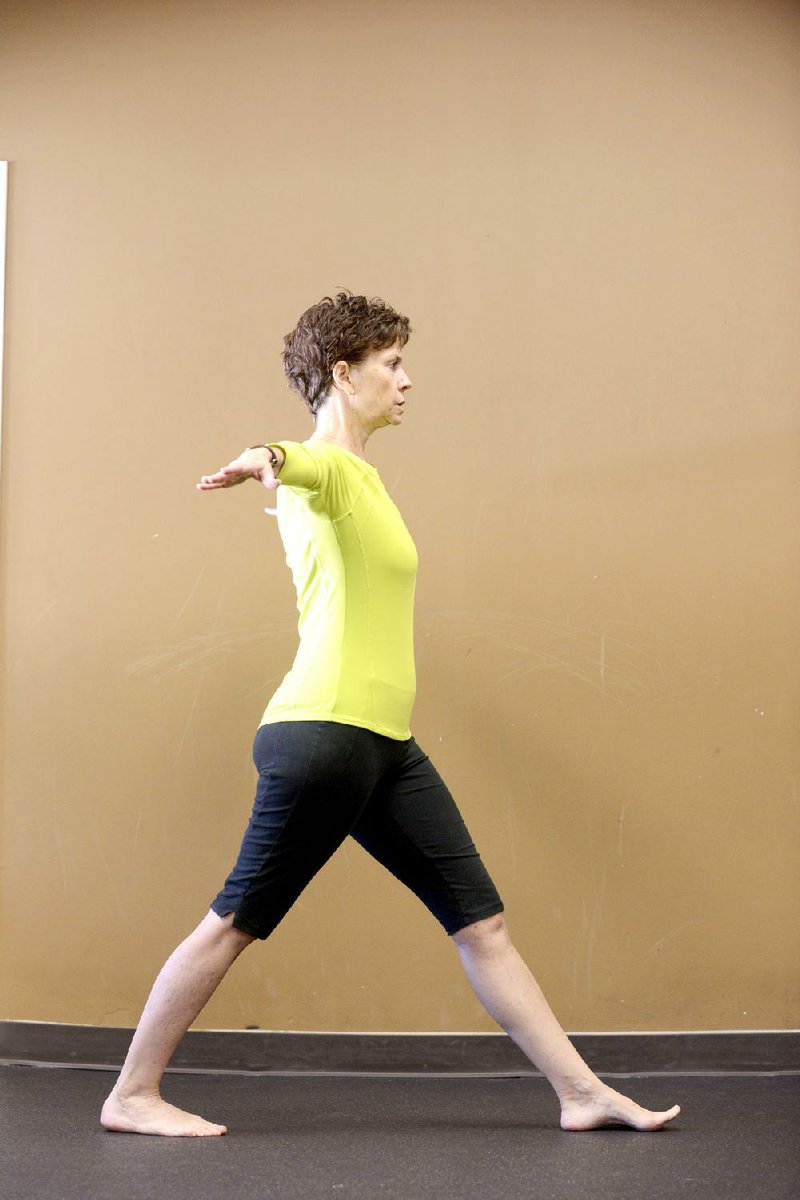LITTLE ROCK — Exercise modifications and variations are important. In some cases, one modification can convert exercise failure into success.
This week, I’ll discuss the progression involved in modifying an exercise and introduce a variation of a standard lunge that exemplified exercise manipulation well.
Sometimes the standard form required by a given exercise just doesn’t work. Some people have anatomical limitations that prevent them from completing the movement; others just don’t like the way the movement feels.
In either case, it’s important to develop a plan with regard to modifying exercises to fit your body’s preferred biomechanical movement patterns.
The first step in modifying an exercise is to recognize that the standard form isn’t appropriate for you. For example, let’s say you can’t do a pushup on your toes. Some people would decide “I can’t do pushups” and never attempt any type of pushup ever again.
But there are ways to vary the exercise so that you could do it.
Whether the motion’s too hard or just makes you uncomfortable, be realistic with yourself and recognize you need a variation. Accept the need to change, and you’re on your way to a more appropriate workout.
The next step is finding a way to reduce the resistance required by the movement or increase your leverage. So the standard pushup done on hands and feet proves to be too difficult. But placing your knees on the floor reduces the amount of body weight you are effectively lifting, and it increases your leverage.
Another key method of modifying an exercise is to increase stability.
A standing exercise typically becomes easier if you do it while seated. Similarly, an exercise performed on an unstable surface such as a BOSU (both sides utilized)ball can be made less difficult by standing on a stable platform: Remove the source of instability (the BOSU); stand on the floor.
Possibly the simplest method of varying an exercise’s standard form is to reduce the range of motion. This makes the exercise far less difficult and can help you build confidence until you’re able to perform the exercise throughout the entire range.
A squat is a great example of a movement that can be performed in many different ranges of motion depending on your fitness level.
This week’s exercise has been modified to become more difficult by adding a degree of instability to the movement. It’s a nice variation that will challenge those of you who have mastered the standard lunge.
1. While standing, step your right foot back 2 to 3 feet into a lunge position.
2. Extend your arms straight to the side of your shoulders as though you were on a balance beam.
3. Lift the toe of your left foot while the heel remains in contact with the floor. At the same time, lift the heel of your right foot so the only thing touching is the toe. This is your starting position.
4. Bend the knees as you lunge straight downward until you almost reach the floor.
5. Stand back up.
6. Do two to three sets of 15 repetitions with each leg.
This simple variation may look insignificant, but it requires a good deal of balance to perform successfully. In addition, using the heel/toe technique will optimize the muscle fiber recruitment in the target muscles of the legs. Enjoy!
Today we add “father” to the list of Matt Parrott’s credentials. His wife, Katie, and newborn Ava Elizabeth are doing well. Matt also has a doctorate in education (sport studies), a master’s in kinesiology and is certified by the American College of Sports Medicine.
ActiveStyle, Pages 27 on 11/26/2012
